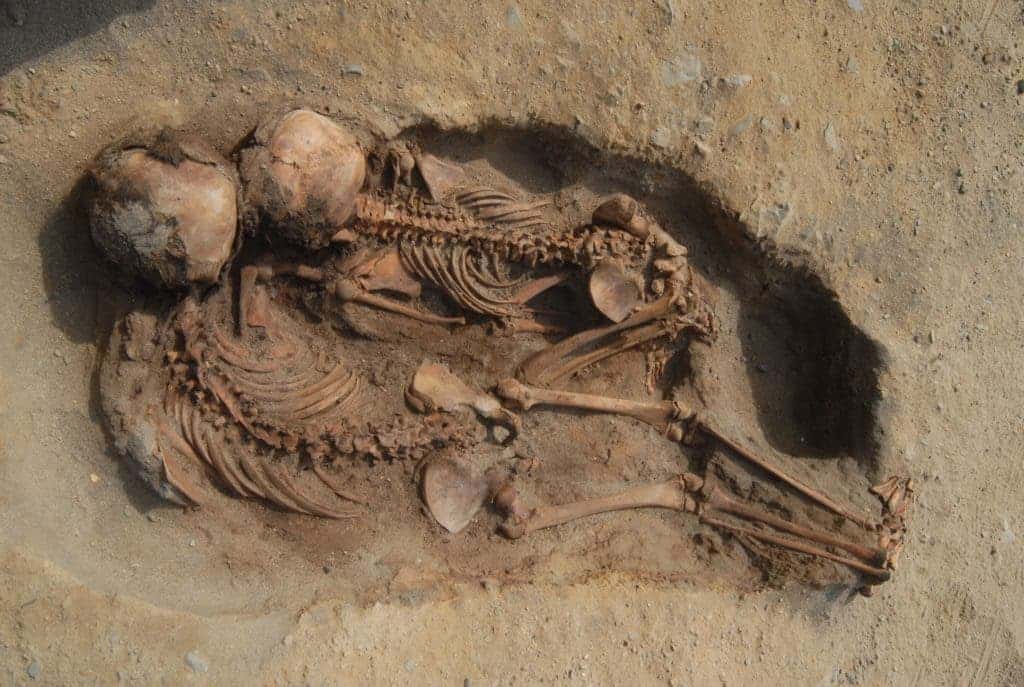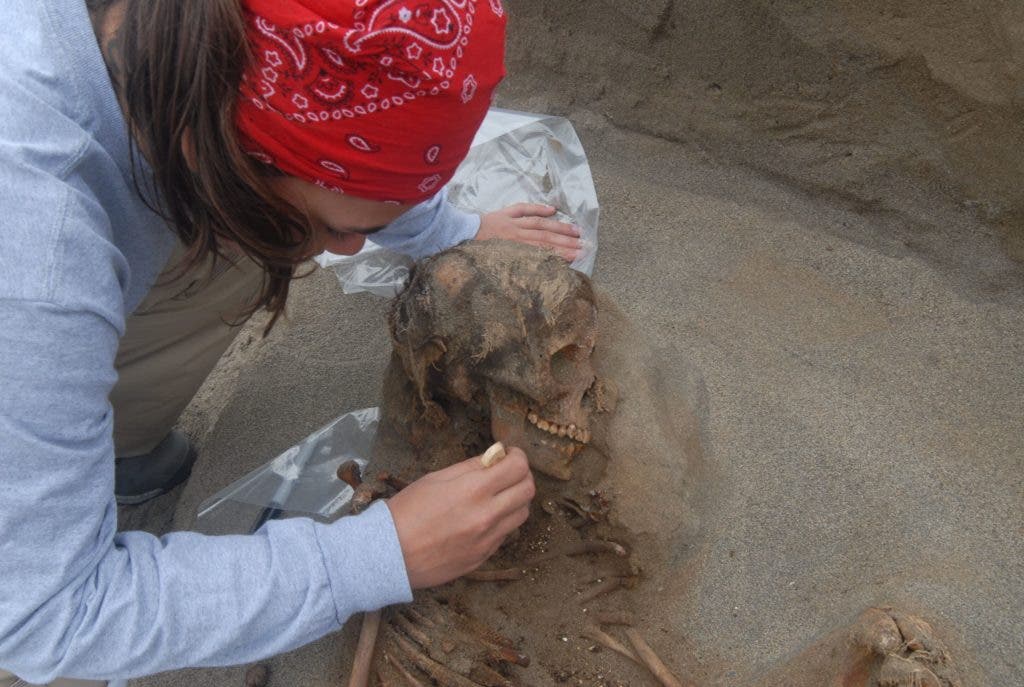Archaeologists working at a site in Peru have uncovered a horrifying mass sacrifice, with over 140 children and over 200 llamas being slaughtered in a ritual. This is the largest known sacrifice of children (and llamas) in the Americas — if not in the entire world.

A horrifying sacrifice
Archaeologist Gabriel Prieto was excavating an old temple near the seaside in Peru when he got word of an unusual occurrence: coastal erosion was uncovering human remains nearby. They spent the next few years excavating and preserving this site, and when Prieto and colleagues were finished, they had uncovered more than 140 sets of child remains and 200 juvenile llamas.
All these lives were sacrificed in one single event, explained John Verano, who also worked at the site and is an author of the new study. In an email to ZME Science, he explained that no child graves cut into or disturb others, so it seems like they were all buried at once. The way there were buried is also indicative of a sacrifice.
The children, aged 5 to 15, were generally buried facing west, towards the sea, whereas the llamas were buried towards the Andes mountains in the east. Three additional sets of remains (a man and two women) were found in close proximity, carrying signs of blunt-force trauma to the head. Researchers suspect that they probably played a role in the sacrifice and were dispatched quickly after.
Cut marks transecting the sternums and bone displacement suggests that both the children and the llamas have suffered a similar fate: they had their chests cut open and pulled apart, possibly followed by the ritual removal of the heart.
Unwilling victims

“The discovery was a surprise, and of course it kept growing in size,” Verano told ZME Science. “We had not seen anything like this before, and there was no suggestion from ethnohistoric sources or historic accounts of child or camelid sacrifices being made on such a scale in northern coastal Peru.”
In addition to the remains, which were well-preserved by a dried mud layer covering the sand dune, archaeologists also discovered a myriad of footprints, belonging to sandaled adults, dogs, barefoot children, and young llamas. Deep skid marks illustrate that the llamas tried to resist being dragged to the sacrificial site and were forcibly pushed.
Judging by the footprints, it seems that the children and llamas were led to the site from both the north and the south. Some were brought from far away, as indicated by the cranial modification exhibited by some of the children, a process which was practiced They were sacrificed systematically, by someone who was well-versed in this sort of ritual: the cut marks are clear, indicating no hesitation.
Most of the children and llamas were buried, but some of them were simply left out in the wet mud.
Appeasing the gods
The authors of this grisly ritual belong to the Chimú culture. The sacrifice site, called Huanchaquito-Las Llamas, lies just half a mile away from Chan-Chan, the former administrative center of the Chimú. At their peak, the Chimú controlled an empire: a 600-mile-long territory along the Pacific coast, extending into valleys and areas close to today’s Peru-Ecuador border. They developed a thriving culture from about 900 AD and on the continent, were second only to the Inca empire, which conquered them in 1470, fifty years before the arrival of the Spanish in the region. Radiocarbon dating indicates that the sacrifice was carried out around 1450 AD, at the peak of their power, right before they started a losing war with the Inca.
Of course, the question of why is painfully present. What would motivate the Chimú to do such a thing?
Human sacrifices have emerged in one form or another all around the world — though they do seem to be more prevalent in South America than most other areas. The common theme around these sacrifices is appeasing the gods. Whether it’s to negotiate favor from them or improve environmental conditions, people sacrifice what they hold dear to get something else that they want. In this case, the telling clues might be in the mud layer in which the children and llamas were buried in.
The layer is probably the result of severe rain and flooding, which would have been a rare occurrence in a largely arid landscape. These events were probably associated with El-Niño — the warming of the sea’s surface that occurs every few years, especially in the equatorial Pacific area.
“The site has evidence if flooding indicating heavy rainfall that only occurs during sporadic El Niño events, so this is possibly the reason to make such a huge offering,” says Verano.
The flooding would have probably disrupted the agricultural systems, while in the seas, El Niño would have disrupted important fisheries. The Chimú were potentially faced with famine, and researchers believe this was the driving cause for the sacrifice.
Unbeknownst to them, however, the Chimú would crumble under the Inca attacks just decades later. It’s unclear if these weather events led to their demise, but even if they would have survived the war with the Incas, the Spanish arrival was also just decades away, and this event would alter the fate of South American culture in an unprecedented way — one way or another, the Chimú demise was bound to happen.
But while their culture came to an end, for archaeologists, this is only the beginning. Verano says he has dug so many sacrifices in Peru that he almost got used to it. But one can only wonder how many more such sites still remain uncovered in Peru and in the world.
“This site opens a new chapter on the practice of child sacrifice in the ancient world,” Verano concludes.
Journal Reference: Prieto G, Verano JW, Goepfert N, Kennett D, Quilter J, LeBlanc S, et al. (2019) A mass sacrifice of children and camelids at the Huanchaquito-Las Llamas site, Moche Valley, Peru. PLoS ONE 14(3): e0211691. https:/


